本文由 Pitagoras Group 授权mooool发表,欢迎转发,禁止以mooool编辑版本转载。
Thanks Pitagoras Group for authorizing the publication of the project on mooool, Text description provided by Pitagoras Group.
Pitagoras Group:该项目可以简单地概括为一座景观优美、自然通风、无障碍的现代化三层建筑,其带顶棚的停车场可容纳500辆车,通过建立一系列功能性和城市化参数,确保了其可达性。
Pitagoras Group:The programme could be summarised briefly as a building with three storeys and a roof, landscaped and accessible, with smoke and natural ventilation, and covered parking for 500 vehicles. It also established a number of functional and urbanistic parameters, determining the accessibilities.
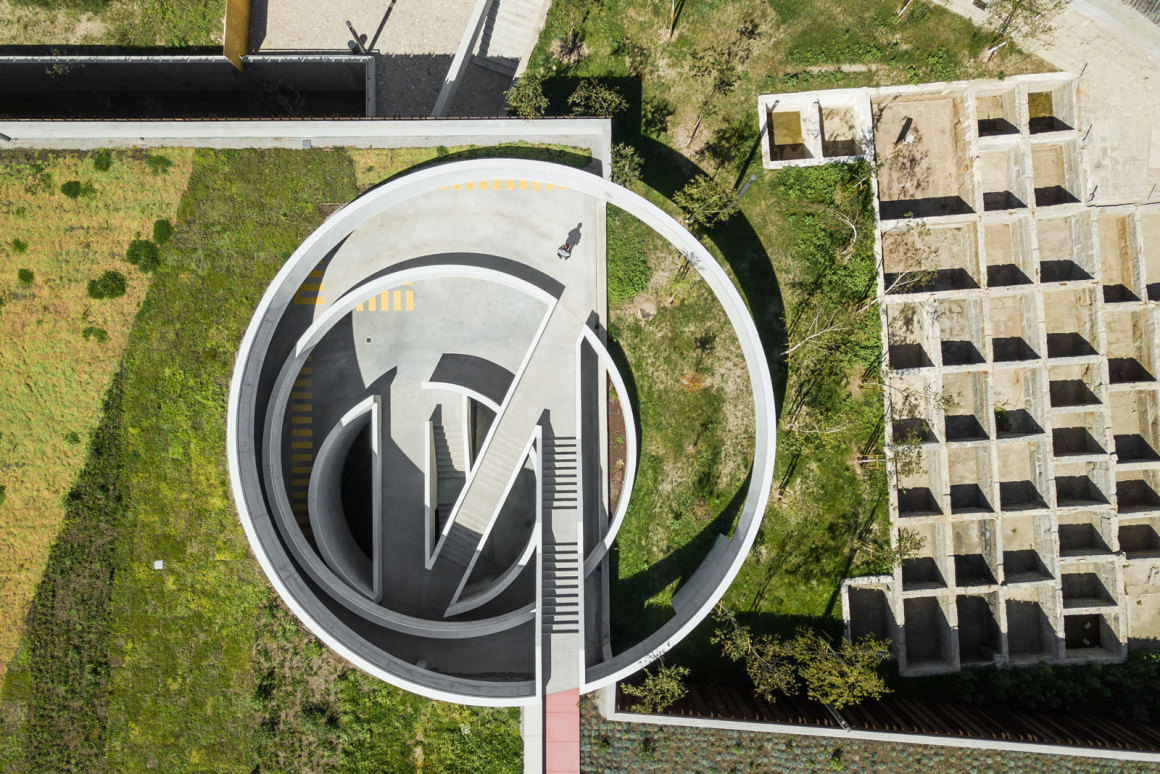


项目所在地位于该历史城镇富人区的侧翼,即城墙环绕的市区及其大型外部广场——Toural广场之间。
现如今,这块的历史街区已经完全被整合,尤其是Rua de Camões和Rua da Caldeiroa建筑物,包括Ribeiro de Couros的肌理特征,以及19世纪末至20世纪初,为更新城市创造新的生产活动而建立的工业建筑。
The block where this project was carried out is located in the flank of the “noble” parts of the historic town, that is between the walled city and its large exterior square – the Toural.
Today, the entire block has been conformed, in particular by the buildings in Rua de Camões and Rua da Caldeiroa, but also by the geographical feature that is Ribeiro de Couros and the occupation which it promoted when the city was incorporating new production activities with the establishment of the late 19th – early 20th century industrial buildings.

由此可见,此次干预的核心在于现有遗产问题以及如何在历史悠久的街区内融入新方案的问题。自然地,我们将致力于传承并整合原先造成了许多错误,形成带有主观性虚拟现实的价值、设计语言和概念。
所以,当我们谈到复原和改造时,在第一种情况下,我们其实说的是修复和更新的意思,在第二种情况下才是改造的意思。我们同时在这三个方面开展活动,仔细考量哪些东西可以修复,哪些可以翻新,以及哪些是必须要进行改造的,这些考量不仅仅是招标方案的需求,也是为了满足各种建筑在未来可持续性的需要。
The question of the existing heritage and of the integration of the new programmes in consolidated historic zones would have to stand at the core of this intervention. Naturally, we would be working on heritage and integration values, words and concepts that generate so many mistakes and produce virtual realities loaded with subjectivity.
So, when we speak of rehabilitation and reconversion we speak, this being the meaning of the words, of repairing and renovating in the first case, and transforming in the second. So, the project sets out activities on these three fronts simultaneously, carefully selecting what can be repaired and what should be renovated and accepting that other things must necessarily be transformed, for they derive from the need to fulfil the requirements of the tender programme but also from the need to ensure the future sustainability of the various buildings.

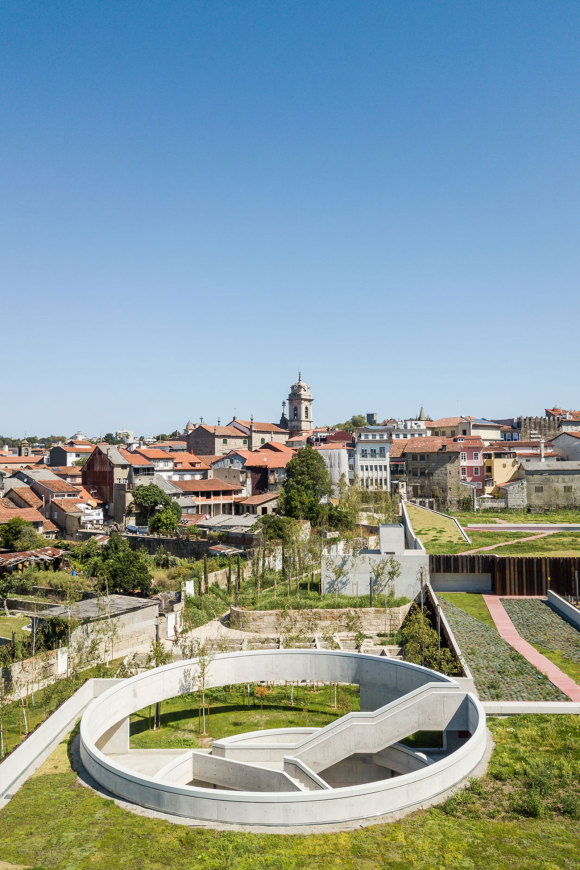
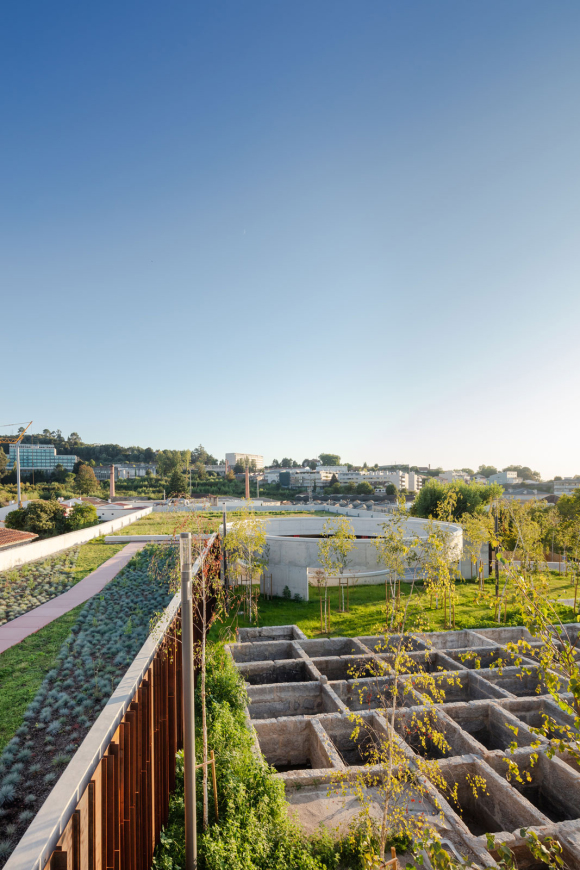
除了上述原则外,在开发这个项目时,重要的是努力创建一个对未来用户来说清晰且易于理解的解决方案。这就需要在街区内部创建了一个新的人行横道网络,这样也重建了地块内部的现有道路,其目的是为了这些公共空间得到充分的利用。
In addition to the above-referred principles, what was important whilst developing this project was the endeavour to produce a solution that was clearly and easily perceptible to future users. This resulted in the creation of a new network of pedestrian crossings inside the block but also in the re-establishment of the existing paths along the inside of the plots, their aim being to guarantee that these public spaces are used and enjoyed.
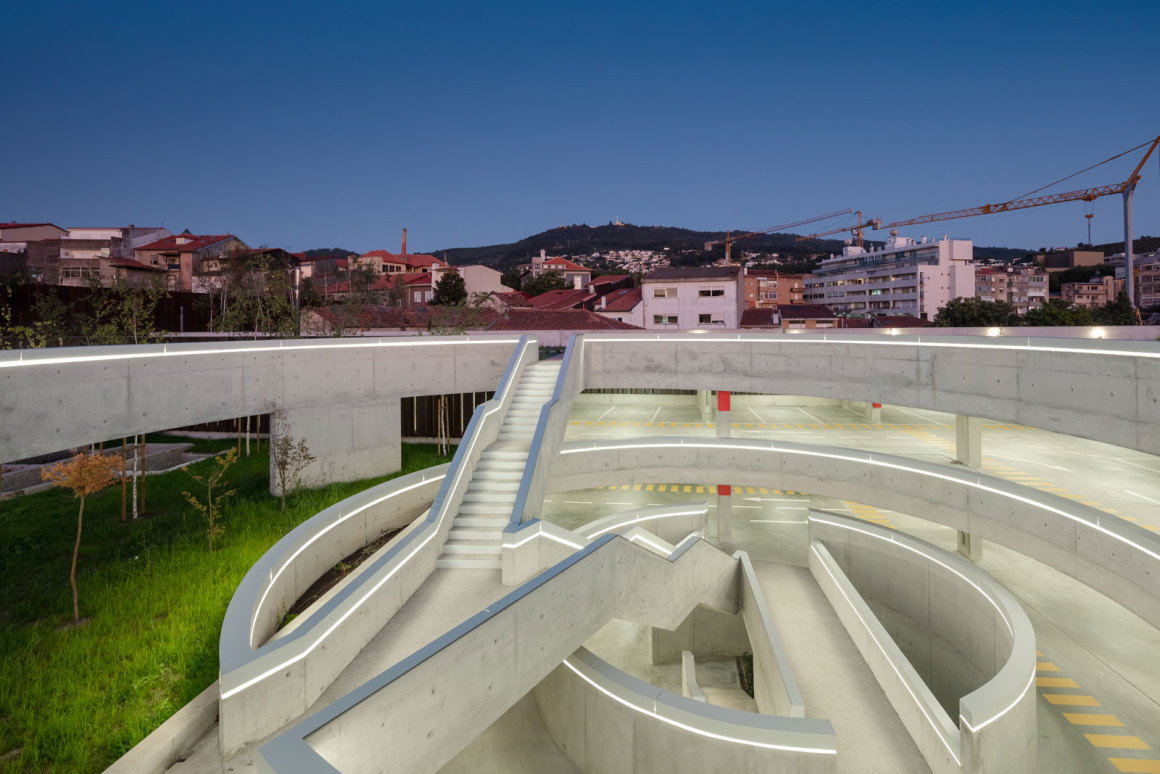
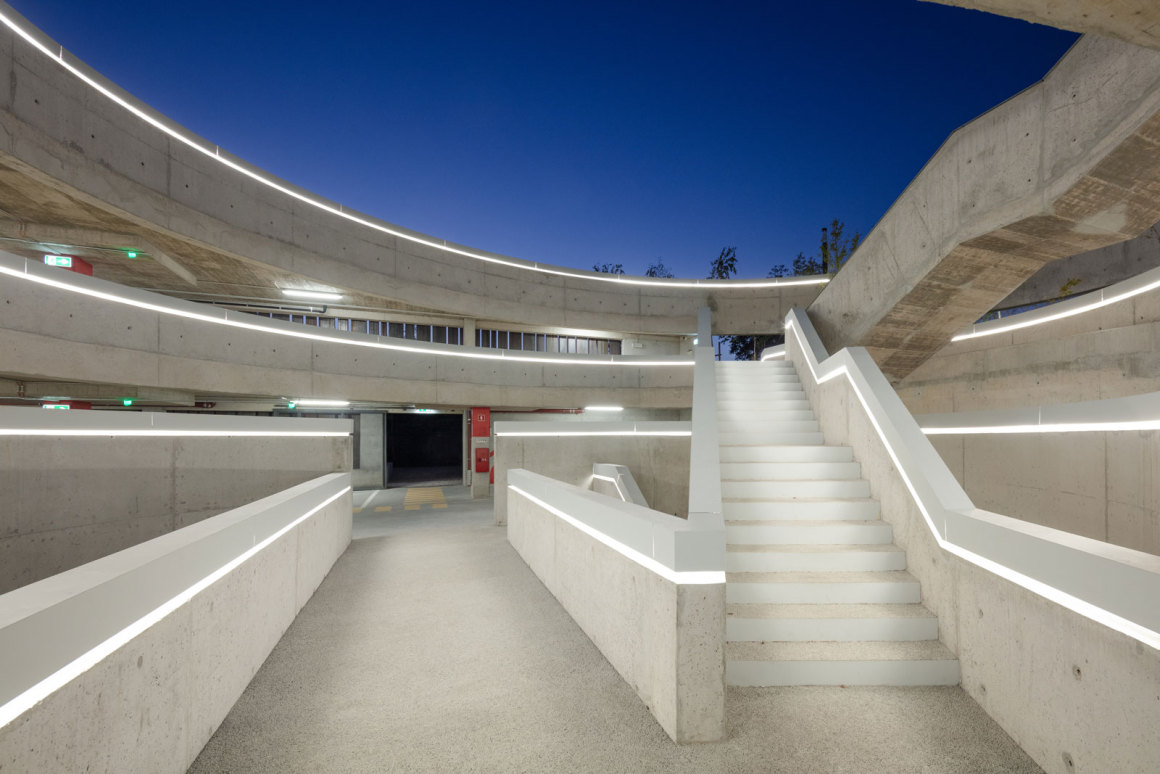
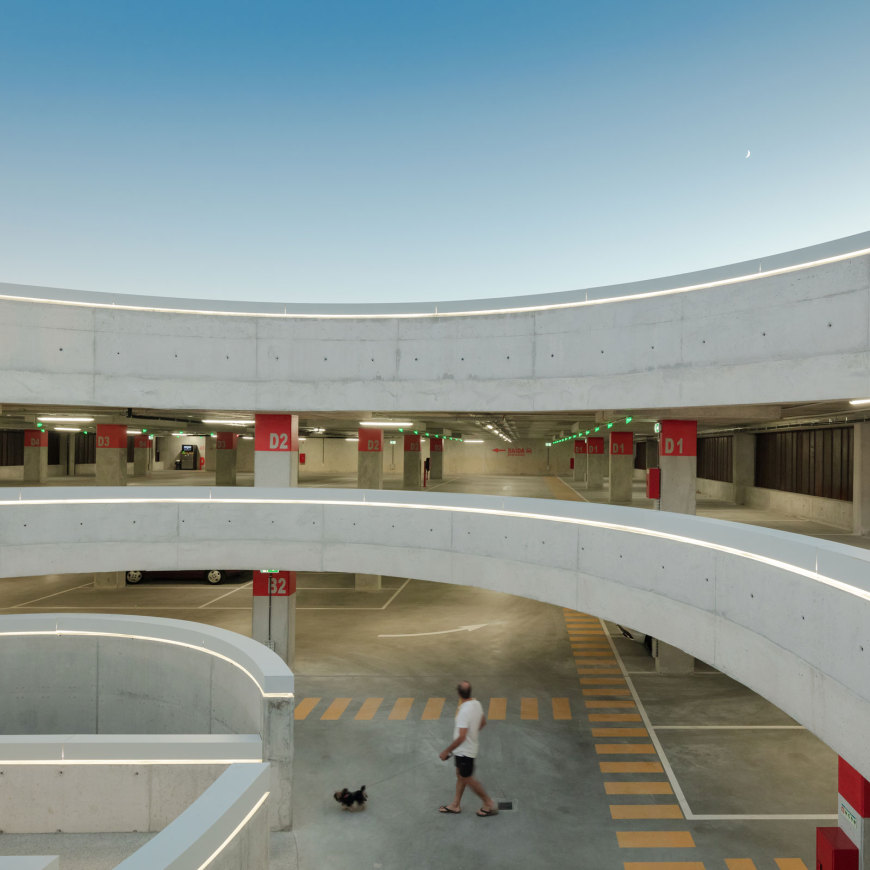
与此同时,这种设计可以使建筑的可见立面更为低调,其高度不超过地面两层,耐候钢格栅的立面系统也帮助弱化了建筑体量。在保持与传统工业建筑的必要相似性的同时,它们也保证了对采光和自然通风的需求,从而实现了项目中预见的可持续性功能理念。
It is also intended to make the visible façade of the building unassuming, never more than two storeys above ground in height, reinforcing the volumetric solution by creating a façade system of Corten steel grilles. Whilst maintaining the necessary analogies with traditional industrial constructions they guarantee the required permeability to light and air, and so fulfil the functional idea of sustainability foreseen in the programme.
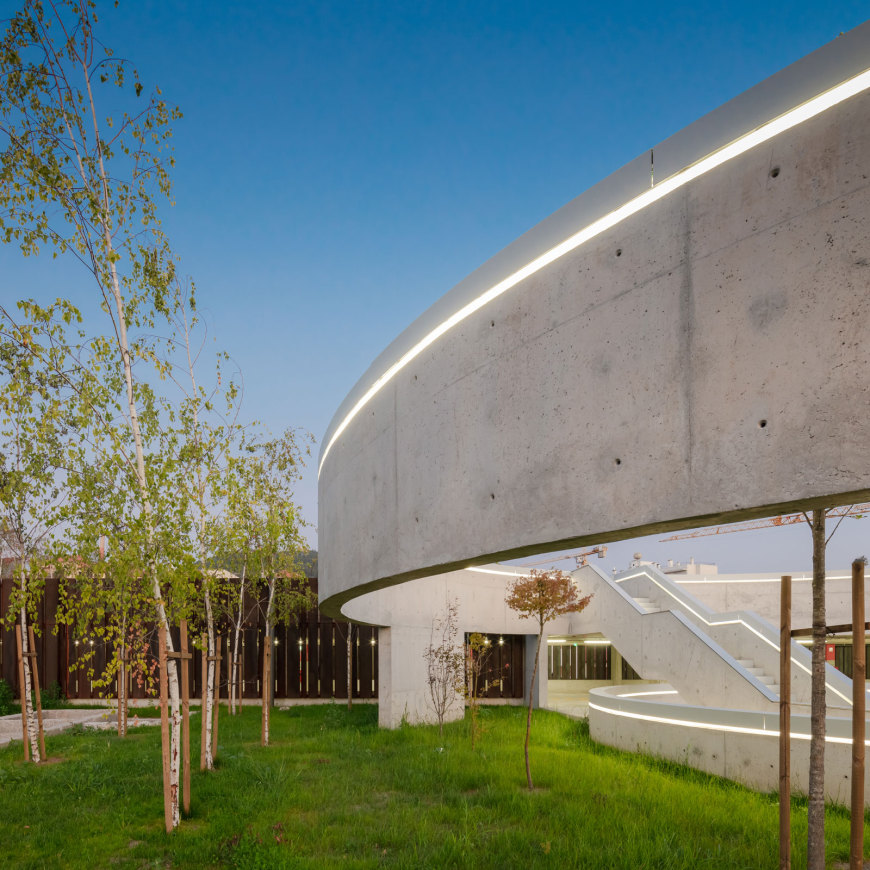
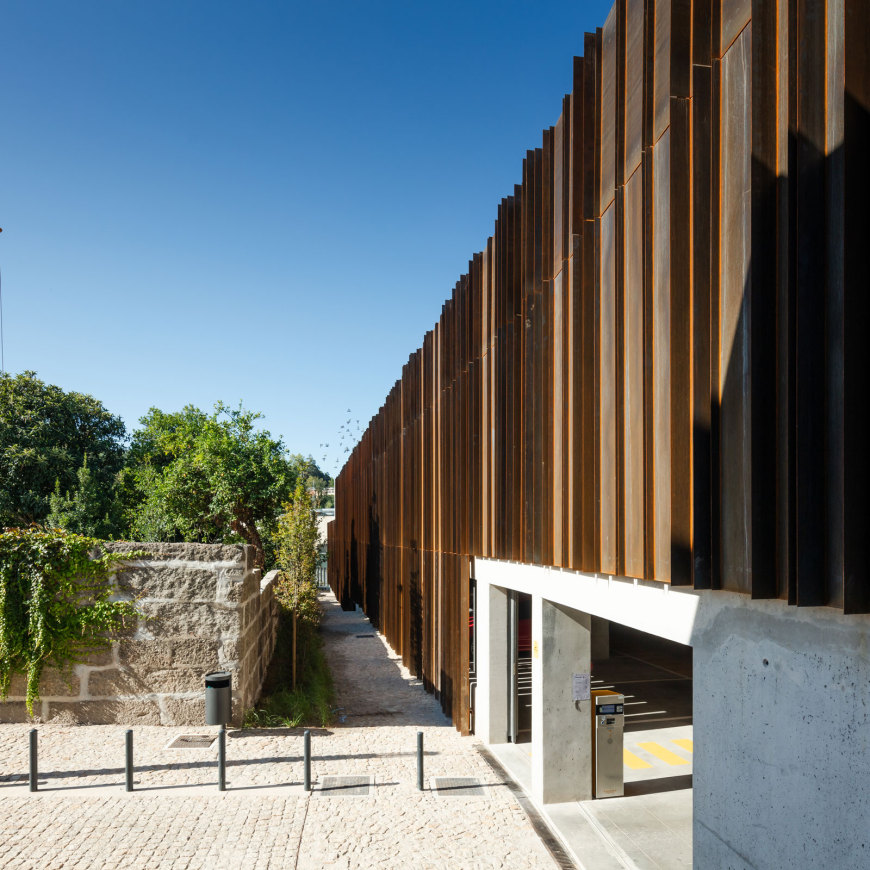
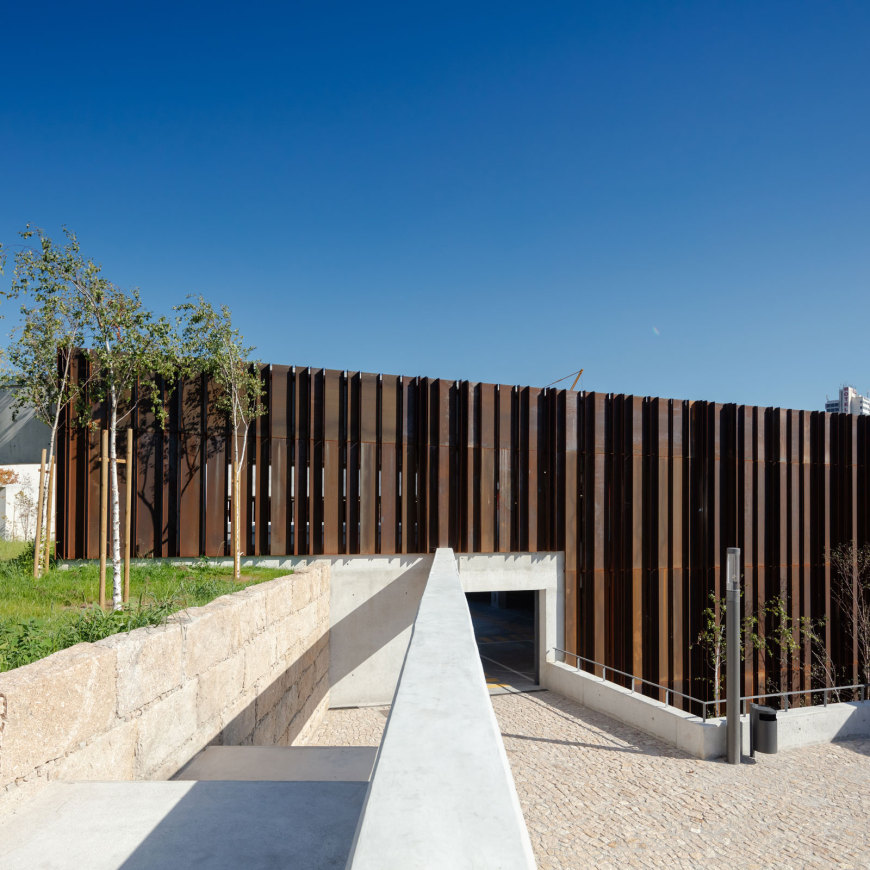
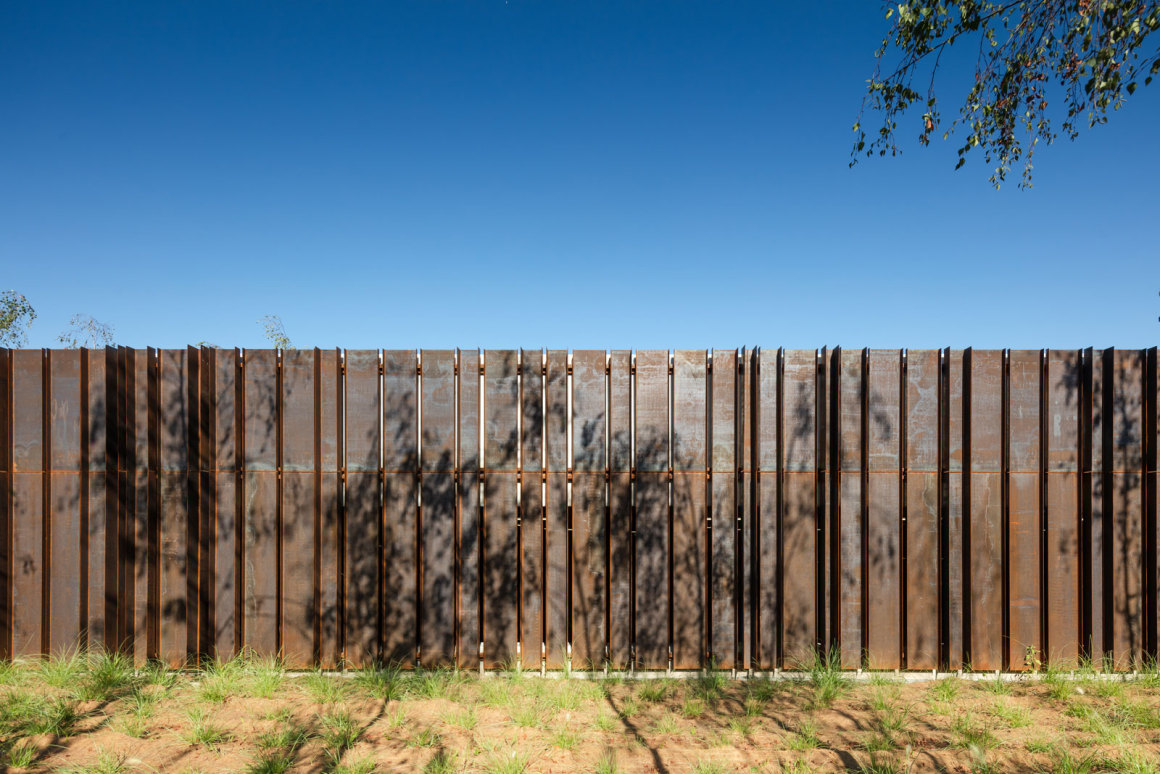

简而言之,我们的目标是实施一种干预,这种干预不模仿已经存在的东西,不被干预领域的背景所压倒,有助于吸引其他人重新改造他们的私人后院,且具有变革性,因此,尽管我们不太相信建筑的救赎能力,还是在该私人领域提出了这次不太传统的解决方案和建议。
In short, the aim was to carry out an intervention that did not mimic what was already there, that was not overpowered by the context of the intervention area, that helped attract others to reconvert their private backyards, but was transformative and so suggested less conventional solutions and proposals in the private sphere, although we do not believe greatly in the redemptive capacity of architecture.
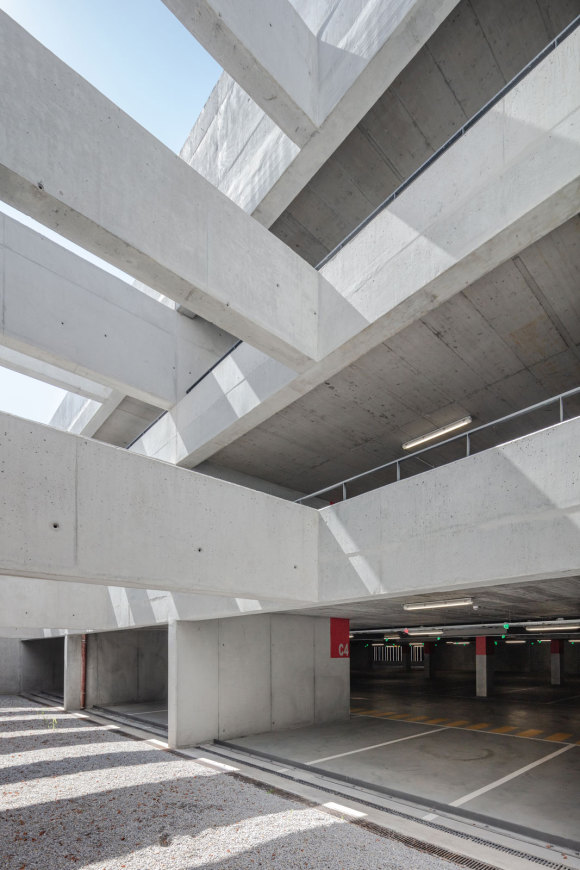


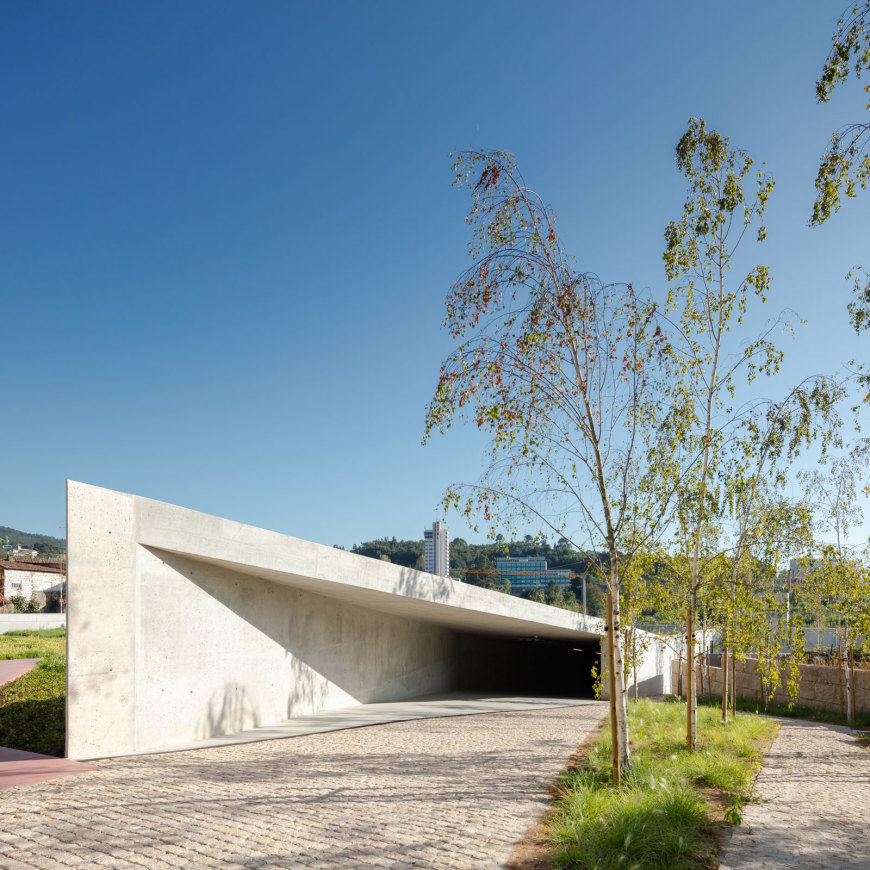
▼屋顶平面图 3rd Floor Plan
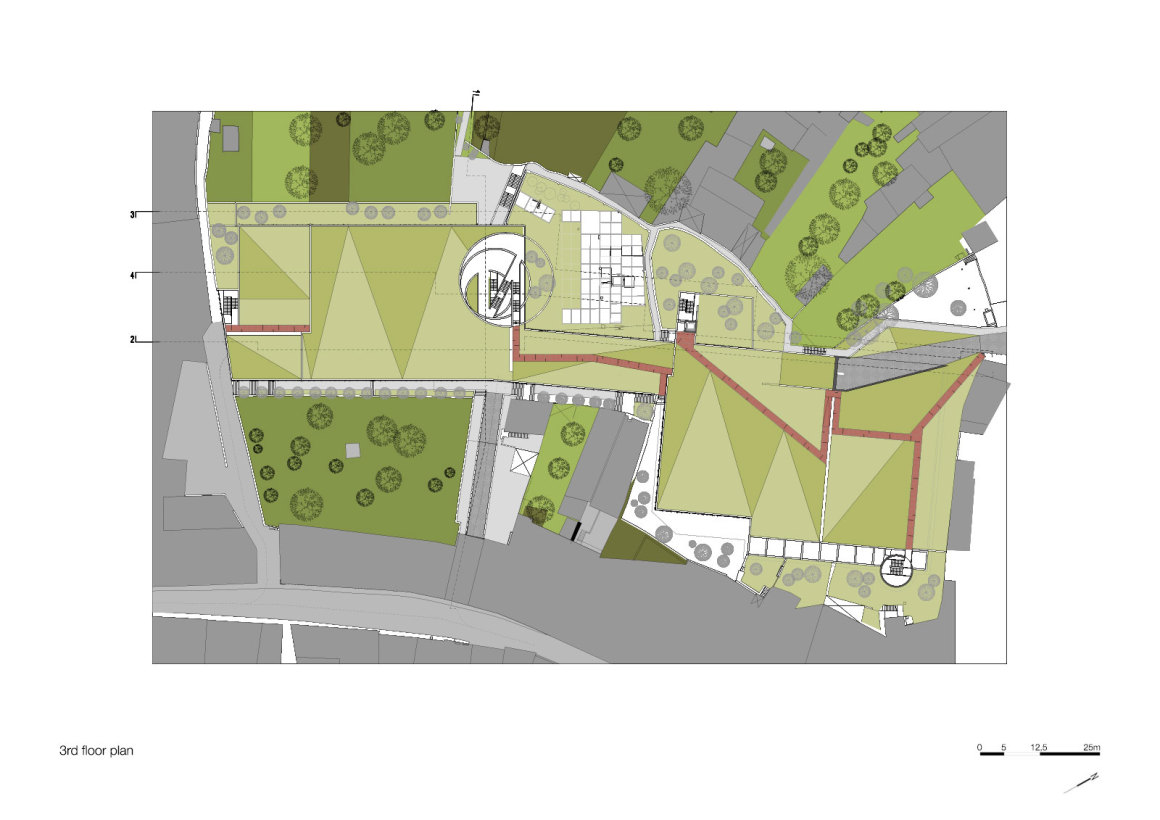
▼各层平面图 Floor Plans
▼南、东立面及剖面图 South&East Elevation and Section
▼剖面图 Section

项目:Caldeiroa 停车场
地点:葡萄牙,吉马良斯
设计:2013年
竣工日期:2019年
面积:15000平方米
建筑:Pitagoras Group(Fernando Seara de Sá, Raul Roque Figueiredo, Alexandre Coelho Lima, Manuel Vilhena Roque)
合作者:João Couto, André Malheiro, João Carvalho, Hélio Pinto
基础和结构:Projegui
水利工程:Projegui
机械工程:Layout
电气工程:Feris
摄影:João Morgado
Project: Caldeiroa car parking
Location: Guimarães, Portugal
Design year: 2013
Completion date: 2019
Area: 15000m2
Architecture: Pitagoras Group (Fernando Seara de Sá, Raul Roque Figueiredo, Alexandre Coelho Lima, Manuel Vilhena Roque)
Collaborators: João Couto, André Malheiro, João Carvalho, Hélio Pinto
Foundations and structures: Projegui
Hydraulic engineering: Projegui
Mechanical engineering: Layout
Electrical engineering: Feris
Photography: João Morgado
更多 Read more about: Pitagoras Group





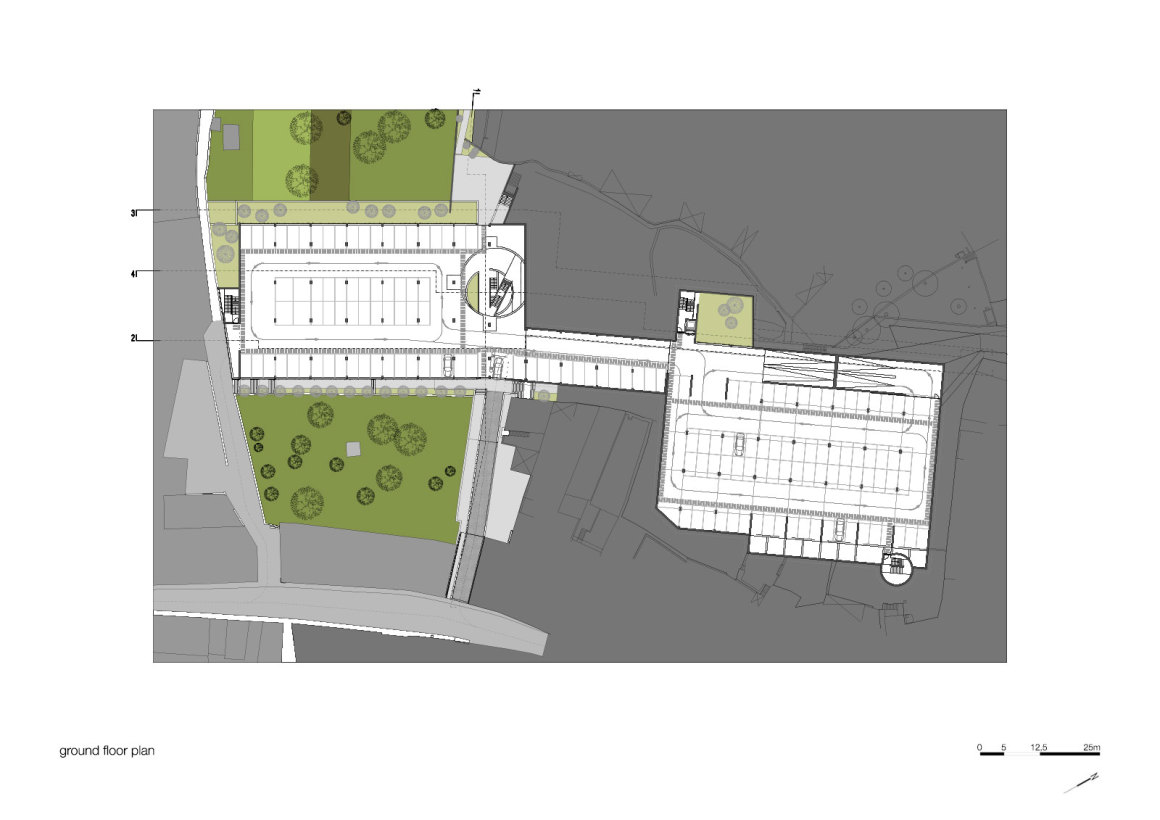
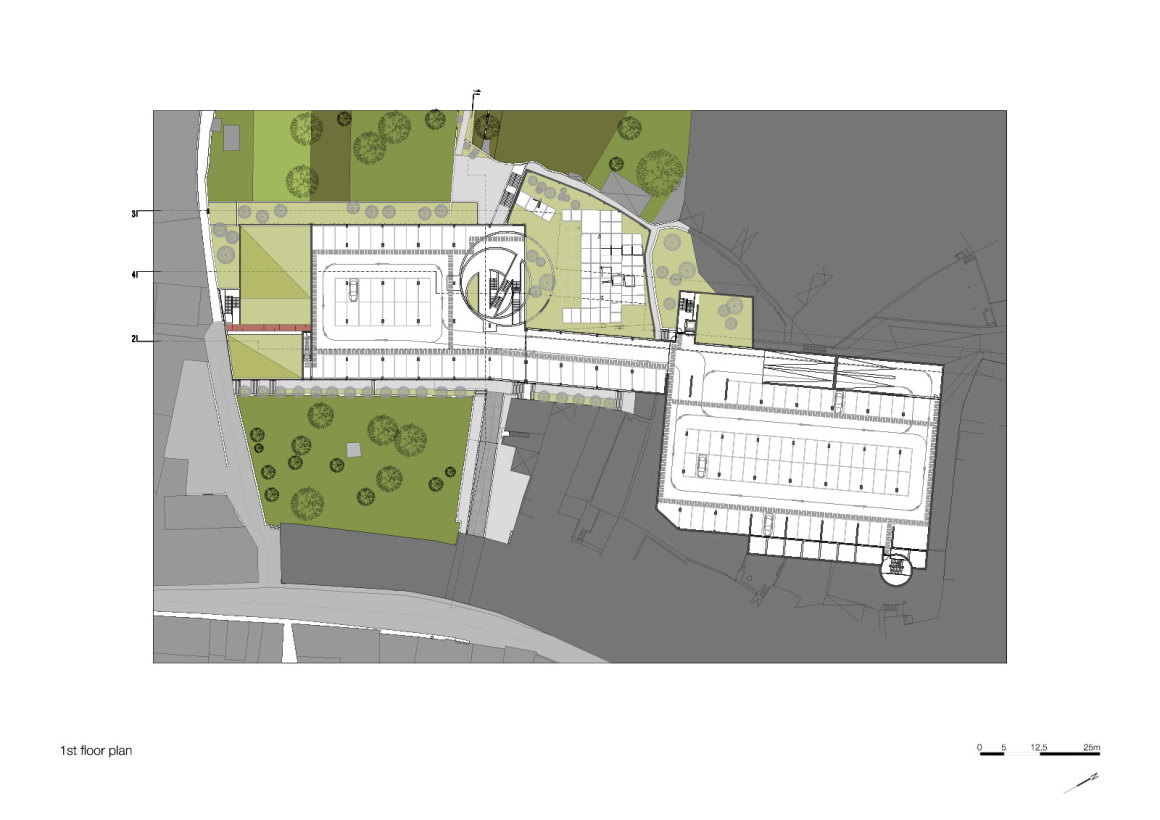

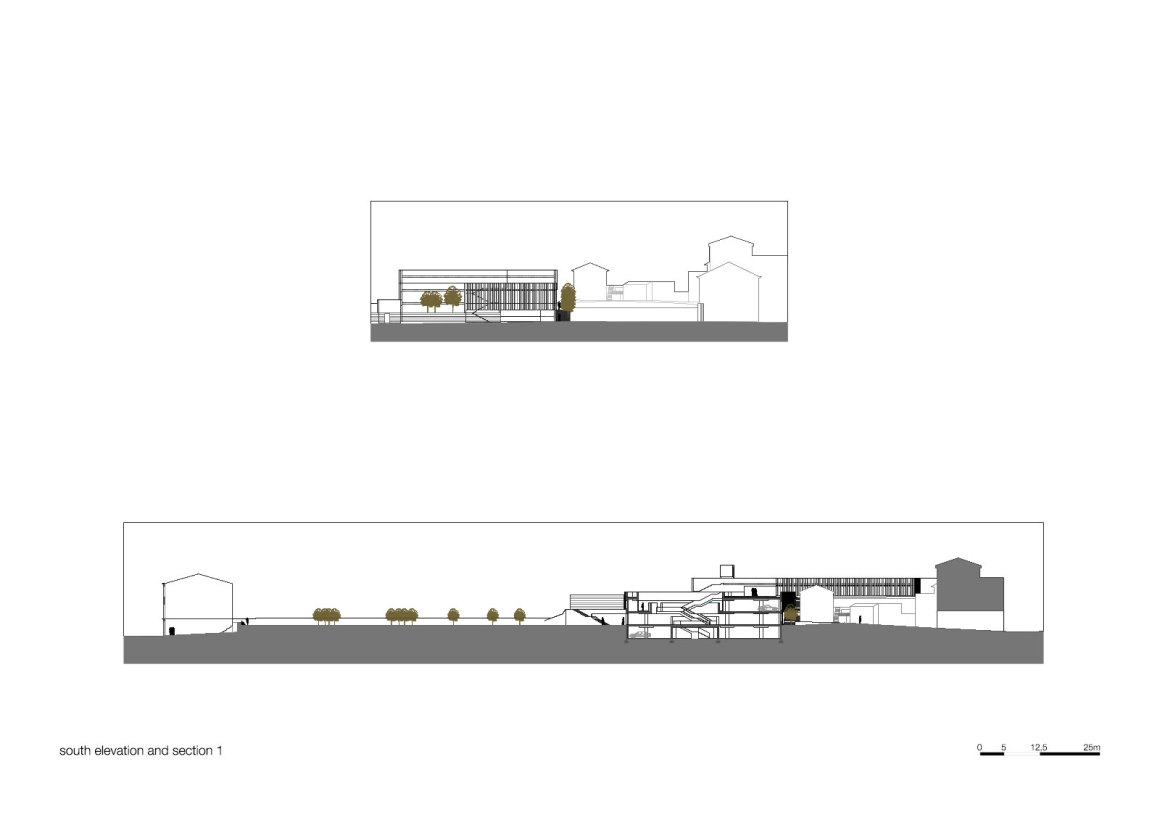
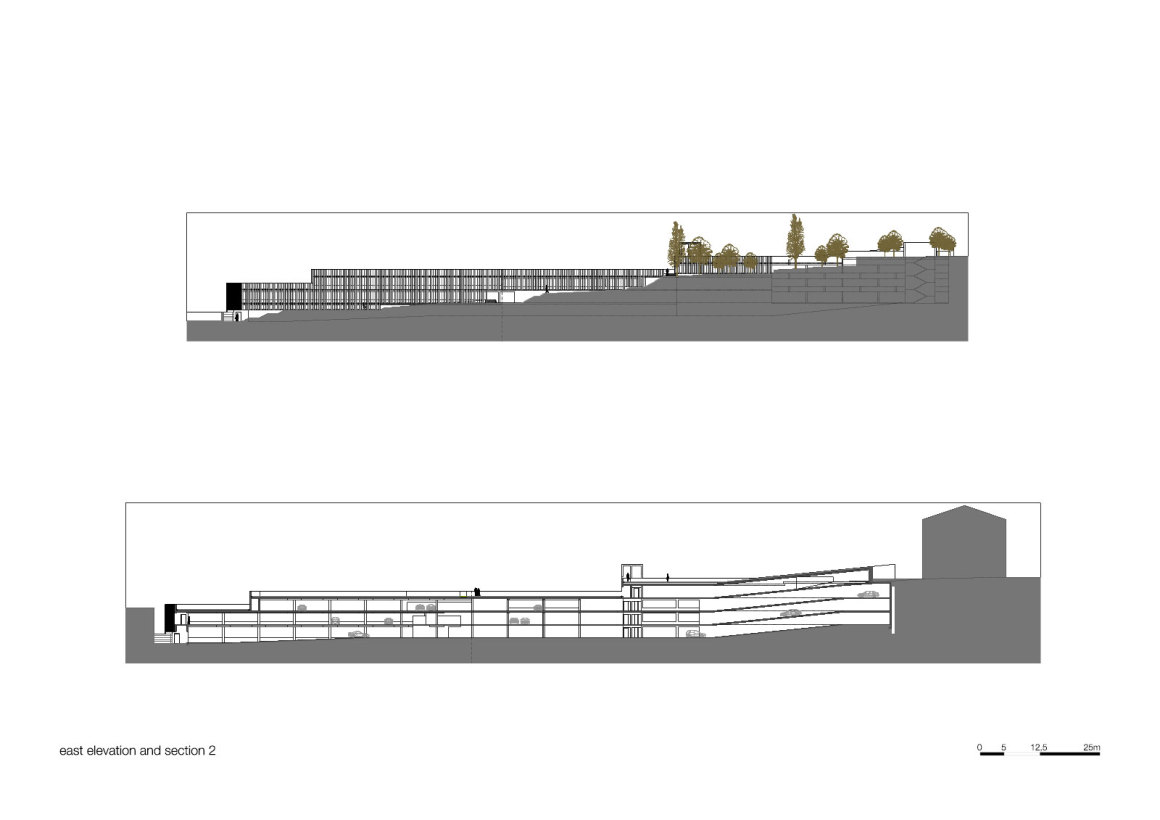


0 Comments